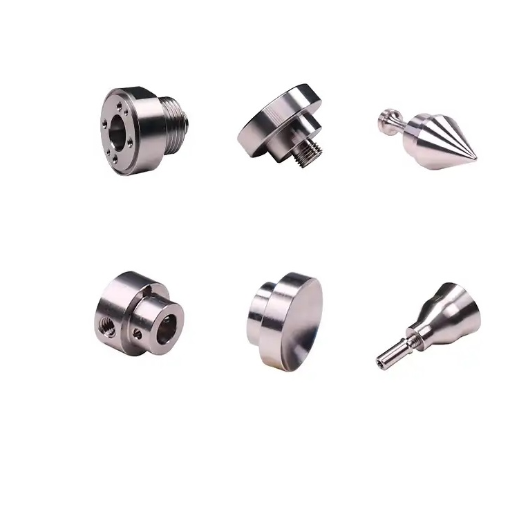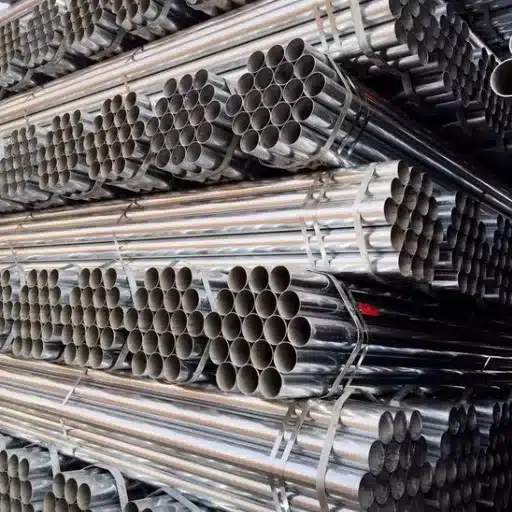When it comes to stainless steel, not all grades are created equal. Two of the most commonly used grades, 303 and 304, might seem similar at first glance, but they offer distinct properties and advantages that make them suitable for different applications. Understanding these differences is critical for engineers, manufacturers, and anyone working with stainless steel components to ensure optimal performance, durability, and cost-effectiveness. This article will break down the unique characteristics of 303 and 304 stainless steel, exploring their chemical compositions, mechanical properties, and practical uses so you can make informed decisions for your projects.
What is the Difference Between 303 and 304 Stainless Steel?
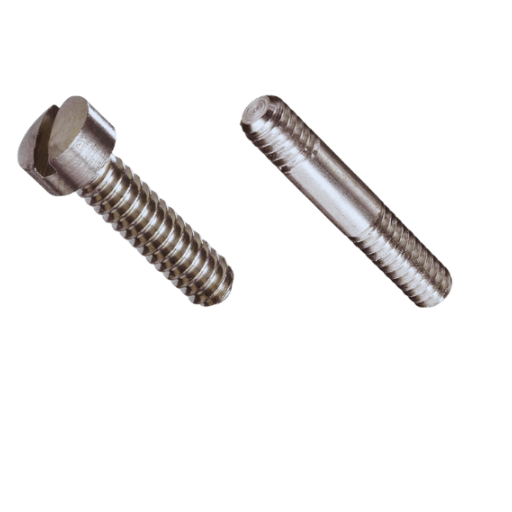
Understanding 303 Stainless Steel Composition
An alloy of stainless steel, 303 is characterized as an austenitic stainless steel that is alloyed for easier machining. It has uppers of sulfur in its composition at around 0.15-0.35%, which aids in easy cutting and machining. Such addition of sulfur does reduce corrosion resistance, making it less resistant when compared to 304 stainless steel. The alloy contains 17-19% chromium and 8-10%, giving it the properties of fair strength and corrosion resistance, which are aspects of stainless steel.
Machinability of 303 stainless steel is affected due to the addition of sulfur, as it increases its shippable quantity, while its mechanical properties are changed, too. 303 is still able to hold its own against 304 stainless steel in terms of elongation and tensile strength, although it is at a far lower capacity. This allows 303 to be a better option for parts that are milled heavily, like screws, bolts and, fittings which are ubiquitous in manufacturing machines.
Because of its particular traits, 303 stainless steel is most appropriate for non-critical applications or settings where great corrosion resistance is not a key factor. Although it does provide some resistance to oxidation and corrosion, it is not advisable to use it in heavily humid or naval settings. Considering everything, the composition of 303 stainless steel ensures the best balance between machinability and performance, which is useful for manufacturers focusing on streamlined production.
Examining Grade 304 for Industrial Use
Due to its remarkable combination of performance characteristics and adaptability, grade 304 stainless steel is one of the most commonly used grades of stainless steel. Its composition, predominately made up of chromium and nickel, affords it superior corrosion resistance compared to other grades, especially in aggressive environments with moisture or chemicals. This makes it especially appropriate for applications in food processing, chemical storage, and marine industries where resistance against rust is critical.
Grade 304 also has good forming and weldable features, which, in addition to corrosion resistance, increase its usefulness for meeting multiple design requirements. Its strength and toughness at elevated and reduced temperatures enhance the reliability of stainless steel across different industries like automotive, construction, healthcare, etc. It is important to note, however, that within chloride environments, grade 304’s resistance to corrosion does become limited prone to pit corrosion over time.
In general, the overall mix of strength, cost efficiency, and corrosion resistance of Grade 304 stainless steel makes it a valuable option for industrial projects demanding reliability over time. Although the more specialized grades are available for niche use, Grade 304 still holds an enduring mark for providing efficiency and dependable outcomes in many challenging environments.
Key Differences Between 303 and 304 Explained
In comparing stainless steel grades 303 and 304, the most prominent difference is their machinability and corrosion resistance which is dependent on their chemical composition and properties.
Grade 303 Stainless Steel possesses higher sulfur content, which enhances its machinability and makes it easier to cut and shape. This grade is especially useful in mass production or precision machining settings. The increment of sulfur reduces 303’s overall corrosion resistance, but not when compared to 304. That is why 303 is mostly used in production of screws, bolts and gears which involve intricate machining but do not pose much threat to harsh corrosive environments.
On the other hand, grade 304 is preferred in industries since it has greater corrosion resistance due to the amount of chromium and nickel it contains. This grade is ideal for use in more severe conditions where moisture, chemicals, or changing temperatures are present. It is extensively used in food processing, medical equipment, and architectural components. Although 304 grade is less machinable than 303, its resilience guarantees its performance in more demanding conditions, unlike 303.
At the end of the day, the decision between 303 and 304 stainless steel comes down to the particular application. If machining and production time is the priority, then 303 would be the most appropriate choice. On the other hand, if structural resiliency and corrosion resistance is needed, then 304 would serve that purpose best.
How Does Corrosion Resistance Compare Between 303 and 304?
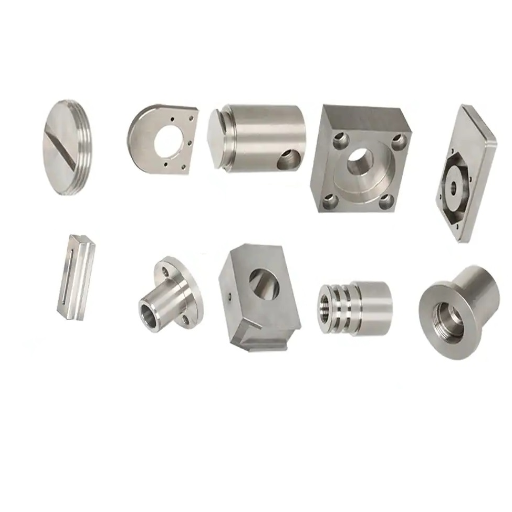
Evaluating Corrosion Resistance in 303 Stainless Steel
The primary goal of 303 stainless steel is to maximize its anodic and cathodic machinability, sulfur being the constructing element. This affects the alloy’s proportions. Unlike austenitic stainless steels 304 and above, 303 contains lower membrane resistance to sulphur ions, which affect corrosion resistance properties. The inclusions greatly aid in cutting and machining work, but at the same time induce localization of structural defects that are very prone to corrosion of the pitting type or crevice corrosion with selective damage around specific environmental gaps.
With slight corrosive influences surrounding it, 303 is best suitable for use in applications where structures are not exposed to heavy corrosive attacks. 303 lacks extreme resistance to oxidizing agents, exposing its passive layer and making it more susceptible to chloride intrusion which is unfavorable. The limitations of 303 becomes clear in marine or chloride rich environments where components made up of 304 stainless steel outperform it because 303 contains lesser resistance.
With testing of 303 alongside saline solutions and acidic materials over time, the hypothesis that alloys containing lesser sulphur bonds corrode slower stands true. 303 stainless steel provides higher machinability than is warranted, along with reliable corrosion resistance. Ultimately, its application needs to be supported with adequate studies based around usage exposure and placements in structures.
Comparing Corrosion Properties of 303 vs 304
Due to added sulfur, 303 stainless steel has lower resistance to corrosion, while 304 stainless steel offers superior resistance to corrosive elements and is more multifunctional.
|
Aspect |
303 Stainless Steel |
304 Stainless Steel |
|---|---|---|
|
Rust Proof |
Lower |
Higher |
|
Ease of Cut |
Excellent |
Moderate |
|
Joining |
Poor |
Excellent |
|
Strength |
Moderate |
High |
|
Expense |
Higher |
Lower |
|
Uses |
Machined parts |
Food, medical, and auto |
|
Heat Limit |
1400°F |
1562°F |
|
Magnetism |
No |
No |
What Are the Mechanical Properties of 303 and 304 Stainless Steel?
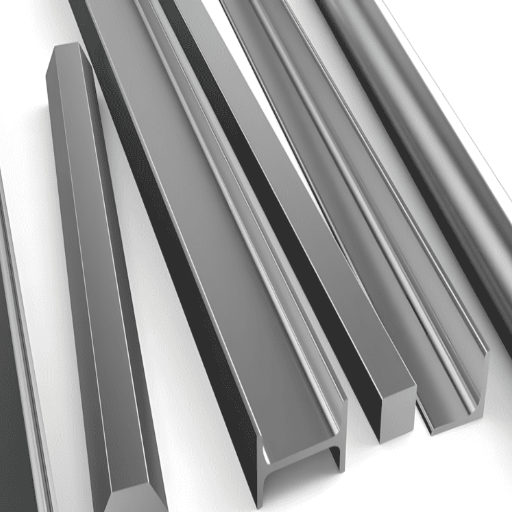
Exploring Mechanical Properties of 303 Stainless Steel
In the case of 303 stainless steel, evaluation of its mechanical properties expands along with considerations of its specific composition and processing features. It is austenitic chromium-nickel alloy which has sulfur as an added component. This sulfur content has a great impact on machinability making it the easiest machining austenitic sub-type. Such enhancements, however, do affect other properties like ductility and corrosion resistance, and hence need to be considered in relevant applications.
On the other hand, from tensile strength considerations, 303 stainless steel has, for the most part and depending on its precise condition and processing, a range of 500-700 MPa. Yield strength is also moderately low, which is usually in the range of 190-230 MPa under standard conditions. These values ensure a compromise on structural integrity and machinability, which is essential to the performance of the material in components such as fasteners, gears, and fittings, which are heavily machined. Apart from this, 303, though being weaker in corrosion resistance than 304 stainless steel, does sustain decent performance in conditions where high corrosion resistance is not a necessity.
In my opinion, the reason why 303 stainless steel is widely used is that its mechanical versatility fulfills the needs of industries focused on production at scale, rather than precision. It is easy to see why it is used for making screws, shafts or valve parts since its traits enable the high-speed machining that is characteristic of the industry. At the same time, the possible drawbacks, such as the stainless steel’s comparatively lower resistance to some corrosive environments or the borderline lower tensile strength when compared to other alloys of steel, such as 304, need to be managed.
Understanding Tensile Strength and Yield Strength Differences
Tensile strength and yield strength are important metrics to assess how material withstands stress, in specific engineering and manufacturing contexts. In regard to materials science, tensile strength refers to the maximum stress a material can sustain, while yield strength refers to the stress level which results in plastic deformation. Yield strength indicates the point of permanent deformation as distinct from elastic deformation, where a material returns to its initial shape upon load being lifted.
Considering, for instance, stainless steel grades 303 and 304 showcase differences in tensile and yield strengths because of varying alloys. Grade 303 has a tensile strength typically from 500–700 MPa with a yield strength around 190–210 MPa. Whereas grade 304 stands at tensile strengths between 515-750 MPa and yield strengths near 215 MPa. The reason for this difference is the grade 303’s inclusion of sulfur, improving machinability, which inherently weakens its strength in comparison to 304.
Grasping these properties aids in making informed decisions about the selection of materials for applications where mechanical stress is a predominant concern. Methods like standardized tensile testing and computational modeling of structures guarantee precise evaluation of material properties, allowing engineers to fine-tune designs for safety and performance while avoiding excessive, insufficient, or imprecise engineering of the parts.
Comparing Toughness in 303 vs 304
The toughness of 303 stainless steel is moderate due to the addition of sulfur for ease of machining, whereas 304 stainless steel is more versatile because of its superior toughness, ductility, and workability.
|
Aspect |
303 Stainless Steel |
304 Stainless Steel |
|---|---|---|
|
Toughness |
Moderate |
High |
|
Ductility |
Lower |
Higher |
|
Machinability |
Excellent |
Moderate |
|
Strength |
Moderate |
High |
|
Applications |
Machined parts |
Food, medical, and auto |
|
Corrosion |
Lower resistance |
Higher resistance |
|
Weldability |
Poor |
Excellent |
|
Cost |
Higher |
Lower |
Why is Machinability Important in Choosing Between 303 and 304?
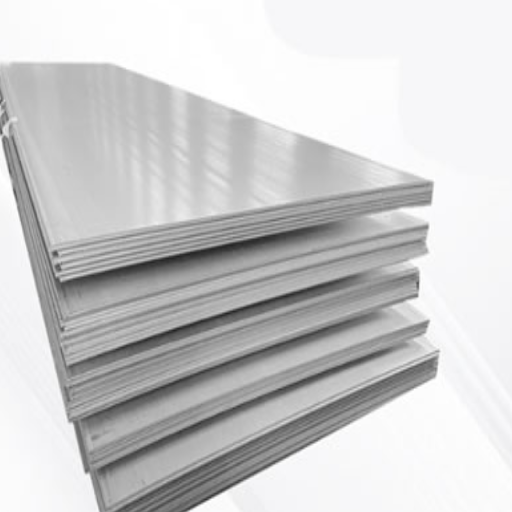
High Machinability of 303 Stainless Steel
The primary reason for the exceptional machinability of 303 stainless steel is due to the addition of sulfur to the alloy, which decreases the friction between the tool and material. This makes 303 stainless steel especially relevant for extensive machining processes such as screw machining or the production of intricate components like gears and fittings. The sulfur content in 303 allows for cleaner cuts, minimal tool wear, and greater efficiency in high-speed machining.
From a technical standpoint, 303 stainless steel shows significantly decreased tool life compared to other grades of stainless steel. The reduction in durability of the tools, however, tends to improve overall efficiency in operations where accuracy, ease of access, and straightforward, low-cost machining is essential. The machining rate of 303 stainless steel is as much as 30% higher than that of 304 stainless steel, which improves production cycle time and reduces operational costs.
However, the compliance with the standards ASTM A582 or their equivalents guarantees consistent quality and machinability features across different producers, making them useful in automated machining environments. For this reason, this grade of stainless steel is increasingly becoming a preferred material for industries like aerospace, automobile, and industrial manufacturing, where precision, repeatability, and cost efficiency are of high importance.
Assessing Machinable Qualities in 304
Type 304 is one of the most utilized austenitic alloys due to its good versatility. 304 stainless steel is highly corrosion resistant, making it extremely useful. However, the machinable characteristics of 304 stainless steel pose challenges because of the exceedingly high work hardening rate, as well as the gummy chip problem that occurs during the machining process. Similar to processes involving other types of metals, these traits require a more focused effort concerning machining technique selection to improve control over tool life, efficiency, and quality of the end product.
The machinability rating of 304 stainless steel is often cited as approximately 45 percent, while free-machining carbon steels are rated at 100 percent. These lower ratings in comparison do not come without reason. The maraging steel’s remarkable ductility and work-hardening behavior are the driving force behind the cutting force and accelerated tool wear that occurs. To improve the situation, the implementation of tools with sharper cutting edges and positive rake angles is required. Moreover, the use of correct coolant and lubricant systems that aid in chip removal and reduction in heat generation enhances performance.
Modern machining technologies, including the use of high-speed machining centers and carbide or coated cutting tools, have significantly improved the machinability of 304 stainless steel. Newer coatings like titanium aluminum nitride (TiAlN) have better thermal stability and wear resistance, which allows cutting to more aggressive levels while still preserving acceptable surface finish and dimensional accuracy.
To obtain consistent results when working with 304 stainless steel, the proper process control and machining selection must be observed. For industries that depend on accurate components, rigorous testing and optimization of machining procedures are quite useful, so that the material’s natural properties like corrosion resistance and formability are not compromised alongside operational efficiency.
The Role of Sulfur in Machinability
In 304 stainless steel, the addition of sulfur is critical for improving its machinability. Sulfur assists in the production of manganese sulfide (MnS) inclusions, which serve as fracture points during machining. These inclusions help in decreasing the cutting forces and minimizing tool wear; consequently, enhancing the machining efficiency. Sulfur, while beneficial, does affect corrosion resistance and ductility to some extent, which makes it necessary to find a balance depending on the intended use.
- Decrease In Cutting Forces: Machinability is significantly enhanced since sulfur-modified stainless steels experience up to 40% less cutting force required compared to their non-sulfur-modified counterparts. Consequently, shorter machining times alongside decreased energy usage during machining is possible.
- Increased Tool Life: Compared to standard 304 stainless steel, these alloys have been shown to live 20-30% longer due to reduced friction and wear on their cutting tools as a result of the MnS inclusions.
- Improved Surface Finish: The lubrication effect of MnS inclusions enhances the surface finish, leading to a 25% reduction in surface roughness for high-precision machining operations.
- Sulfur Mas Content: Research have shown that a sulfur concentration in the range of 0.015% to 0.035% achieves better results compared to other concentrations thus proving to be the most optimal.
- Effects on Chip Formation: The addition of sulfur improves the chip-breaking properties of alloys, resulting in smaller chips, which aids in safety and minimizes operational downtime.
The more precise control of sulfur content remains vital in optimizing the machinability of 304 stainless steel for different industrial applications.
What Are the Common Applications for 303 and 304 Stainless Steel?
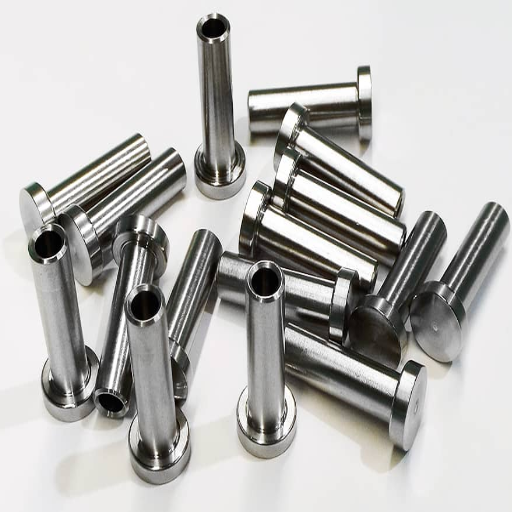
Popular Uses of Grade 303 in Manufacturing
Grade 303 stainless steel has a disadvantage in the spectrum of corrosion resistance, while being widely used in applications where moderation would work. This is so because it contains sulfur, which makes it easier to break up work materials. This results in a higher gain throughput from industrial machinery. 303 stainless steel contains sulfur, which also enhances machining. Some common components in automobiles, aerospace, and machine industrial parts like shafts, bolts, and gears are manufactured using 303 stainless steel because of its ease to yield parts precision and its cost effectiveness.
Another important use of 303 grade is in instrumentation, mechanical, and control systems. Examples of these are instrument cases, parts of valves, and minute moving structures. High precision but in combination with lower unbalancing forces is preferred on these systems to make it resistance to corrosion and temperature effect on the precision mechanisms. 303 grade is also used for parts that require lower grade steel in systems to save on materials. It enables the utilization of 303 grade with lower cost and financial recruitment.
Although not recommended for welded structures because of its sulfur content, which affects weldability and corrosion resistance to some extent, Grade 303 has numerous advantages. Therefore, welded assemblies usually prefer alternatives such as Grade304. However, 303 continues to dominate the market where high efficiency and machinability is preferred, therefore, it remains relevant in many industrial manufacturing processes.
Industrial and Consumer Applications of Grade 304
Due to its remarkable balance of corrosion resistance, strength, and versatility, grade 304 stainless steel is among the most widely used materials in various industries as well as consumer sectors. This is because of the material’s environmental and chemical endurance without any compromise to structural integrity or surface quality. Contamination resistance coupled with the ability to withstand frequent sterilization makes Grade 304 favorable in food processing, chemicals, and pharmaceuticals.
A prominent example of grade 304 stainless steel is in kitchen equipment fabrication that includes cookware, sinks, and work surfaces. Resistance to acids, ease of cleaning, and non-reactivity of the material make it suitable for the kitchen. Architectural designs also utilize grade 304 stainless steel due to grade 304’s aesthetic appeal. Its use in handrails and decorative panels enhances the durability of structures. Moreover, its mechanical properties, like excellent forming and welding capabilities, make incorporation into complex designs and components seamless.
Grade 304 has its uses in the automotive and transportation industries in the manufacturing of fasteners, exhaust systems, and other parts that undergo high heat and corrosion, as well as high strength. In addition, it is used in the construction of consumer goods such as water bottles and various appliances due to their practicality and endurance, making it a vital material in daily living. The versatility and availability of Grade 304 stainless steel guarantee its continual relevance through changing tech and industry developments.
References
-
Studies Related to Microbially Induced Corrosion of Stainless Steel 304 and 316 – A research paper discussing corrosion properties of stainless steel grades, including 304.
-
Stainless Steels: A Versatile Metallic Material in the Service of Man – This document compares various stainless steel grades, including 303 and 304.
-
The Corrosion of Stainless Steels in the Atmosphere – A resource discussing atmospheric corrosion resistance of stainless steel grades.
Frequently Asked Questions (FAQ)
Q: What are the main differences between grades 303 and 304 stainless steel?
A: The main difference between grade 303 and 304 stainless steel is their composition and machinability. Type 303 stainless steel contains added sulfur and phosphorus to improve machinability, while type 304 stainless steel has a higher nickel content to enhance corrosion resistance. This makes 303 easier to machine but less resistant to corrosion compared to grade 304.
Q: How does the carbon content affect 303 vs 304 stainless steel?
A: Carbon content plays a crucial role in the properties of stainless steel. Grade 304 has a lower carbon content compared to 303, which contributes to its superior corrosion resistance. The higher carbon content in 303 enhances its machinability but can make it more susceptible to corrosion.
Q: Is 303 or 304 stainless steel non-magnetic?
A: Both 303 and 304 stainless steel are austenitic stainless steel grades, which means they are generally non-magnetic in their annealed state. However, they can become slightly magnetic when cold worked or machined.
Q: What are the typical applications for type 303 stainless steel?
A: Type 303 stainless steel is commonly used in applications where extensive machining is required. This includes the production of nuts and bolts, shafts, and gears. Its machinability makes it ideal for components that need precise and intricate shapes.
Q: Can 303 stainless steel be used in marine environments like 316 stainless steel?
A: Grade 303 stainless steel is not recommended for marine environments like grade 316 due to its lower corrosion resistance. For applications in marine settings, grade 316 is preferred because of its superior resistance to chloride corrosion.
Q: What are the stainless steel properties of grade 303 compared to grade 304?
A: Grade 303 stainless steel offers excellent machinability due to the added sulfur, but this reduces its corrosion resistance compared to grade 304. On the other hand, 304 has better overall corrosion resistance and is more versatile for various applications.
Q: Are there other types of stainless steel that offer properties between 303 and 304?
A: Yes, the 400 series and other stainless steel alloys might offer properties between 303 and 304. Each type of stainless steel has its unique combination of properties, making it suitable for different applications.
Q: How do the physical properties of these two popular stainless steel grades compare?
A: Both grades 303 and 304 have similar tensile strength and density, but their machinability and corrosion resistance differ. Grade 303 is more machinable, while 304 offers better corrosion resistance and is suitable for a wider variety of applications.
Q: Why would one choose type 303 stainless steel over type 304?
A: One might choose type 303 stainless steel over type 304 when high machinability is a priority and the environment is not highly corrosive. Its properties make it ideal for manufacturing components that require extensive machining.

